After half a century of fat huntingnow it's the turn of carbohydrates to be the talk of the town. Indeed, we have seen in the Blooness guidethat lipids had been demonized by public opinionwhile that they are indispensable to the body and the hormonal system, and only if consumed in the right way, they did not lead to overweight or metabolic diseases.
Conversely, carbohydrates, which have dominated the modern diet since the 1960sThe more you eat, the more likely you are to become overweight and suffer from health problems, because they are often consumed in excess, and via foods of little interest in terms of health.
Rather than replacing fats with carbohydrates in the role of the bad pupil, we will see in this chapter that not all carbohydrates are created equaland based on their impact on blood sugar levels, some will be healthier than others. So the path to a healthy diet is not simply a matter of rebalancing the proportions of the three elements. macronutrients that are proteinsthe lipids and carbohydrates. It also means knowing how to make the right food choices.
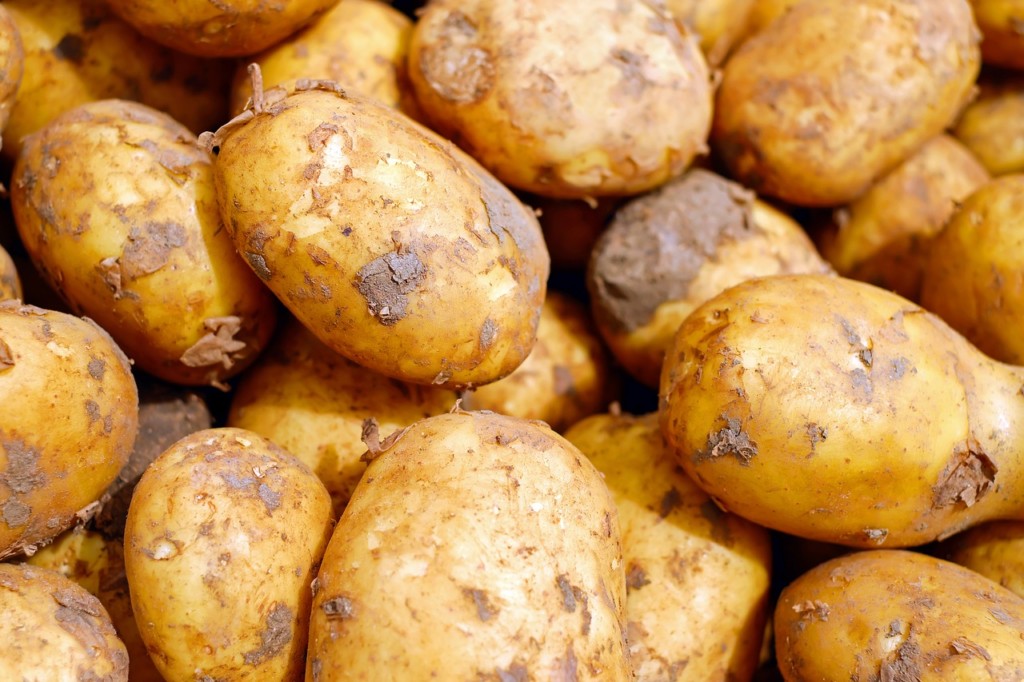
If you choose to reduce your carbohydrate intake, it is also a good idea to carefully select the foods that will make up your carbohydrate intakeWe're here to help you make the most of it, in terms of energy and vitality.
To achieve this, we first need to define certain conceptsas glycemic load or indexThen we can draw up a list of the "best" carbohydrates to include in your diet, whether you're on a diet or not. low-carb high-fat or not.
This content is part of the guide Blooness, the guide to the ideal human diet, the summary of which you can find here 🌱🥑
For those who have chosen to practice ketogenic dietIn the case of a low-carbohydrate diet, where the daily carbohydrate intake is minimal, the question is less relevant. In all other cases, this part of the guide is absolutely central!
What is glycemia?
In order to understand the impact that excessive consumption of "bad" carbohydrates can have, we first need to define certain concepts that are extremely important for what follows. Starting with glycemia, the level of glucose in the blood.
French-speaking subscribers will receive the newsletter in French, and all others will receive an English version.
This glucose is a preferred source of energy for the body. But remember, in the chapter devoted specifically to carbohydratesThe study showed that after a meal rich in carbohydrates, blood glucose levels rose. And yet, the body constantly strives to maintain blood sugar levels at a certain level (between 0.7 and 1.1g per liter of blood), to avoid excess glucose in the blood, which could be harmful, but also to build up glucose reserves (in the liver and muscles, then in fat cells) for later use.
This is why the pancreas releases insulina hormone hypoglycemicin the sense that it is responsible for lower blood glucose levelsby sending excess glucose to the cells responsible for storing it.
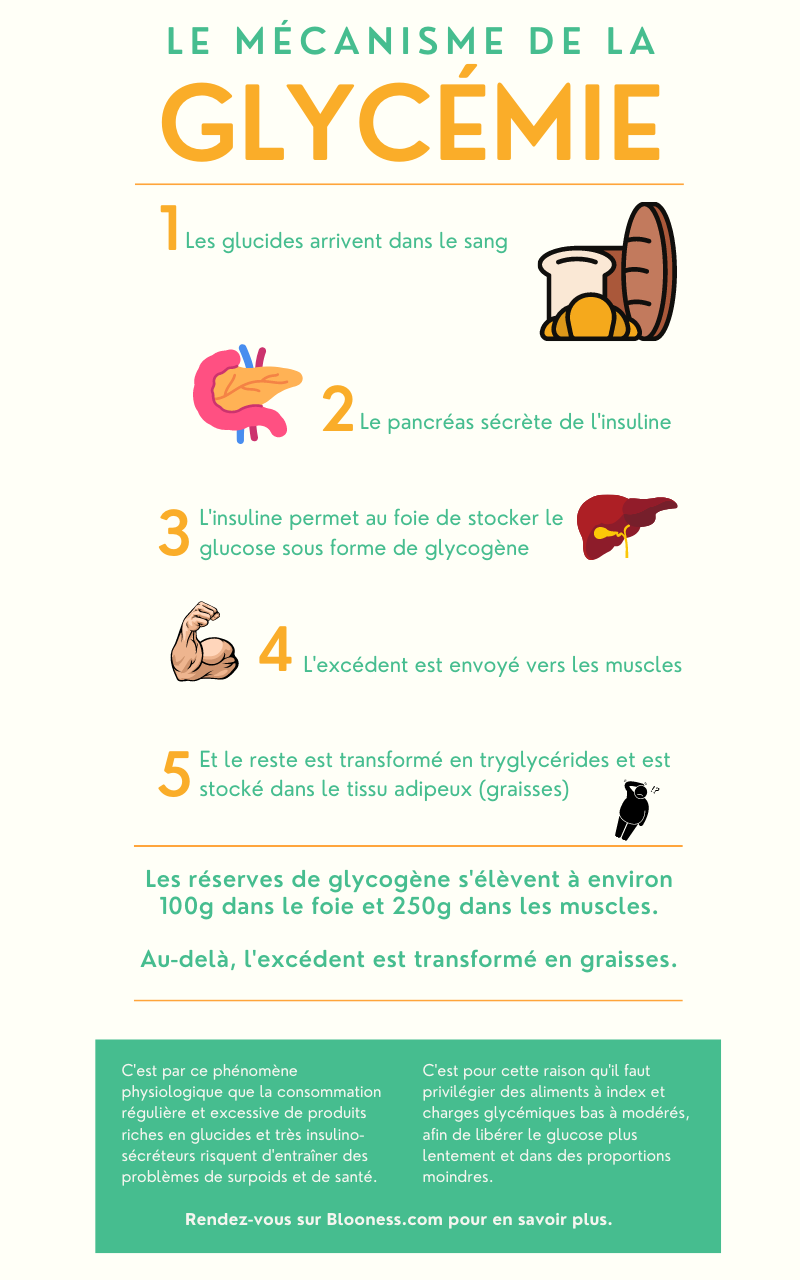
Excess glucose is then stored in the form of glycogen in muscle cells or the liver in the first instance. In fact, this is what athletes aim to do when they perform what they call a "carbohydrate recharge". The problem is that if muscle storage is already saturated - as is usually the case with sedentary people who, due to a lack of physical activity, are not accustomed to drawing on their muscle glycogen reserves - then excess carbohydrates will be stored in the muscles. will be stored in the form of fats in fat cells.
It is through this physiological phenomenon that the overweightand over time health complicationsThese are linked to excess weight, or to "wear and tear" on the pancreas, which is overstretched by excessive carbohydrate intake, and is commonly referred to as insulin "resistance".
How much carbohydrate can the body store before transforming it into triglycerides (fat)?
This is a central question for anyone who doesn't want to overload their body with carbohydrates, to avoid transforming glucose into fat.
A healthy individual's glycogen reserves are around 100g in the liver and 250g in the muscles.. This quantity can vary according to an individual's capacity to increase glycogen reserves, particularly in athletes. In fact, athletes are sometimes advised to limit their carbohydrate intake to around 350g during their so-called "carb rebound", after they have emptied their stocks via a low-to-moderate carbohydrate diet over several days, so as to replenish their glycogen stores, without leading to an increase in body fat.
The influence of carbohydrates on hypoglycemia
Hyperglycemic foods trigger insulin secretionthe famous hypoglycaemic hormone, whose purpose is to regulate glycemia. This is why, a few hours after consuming high-sugar products, we tend to feel what is commonly known as a "rush", characterized by general fatigue and reduced alertness.
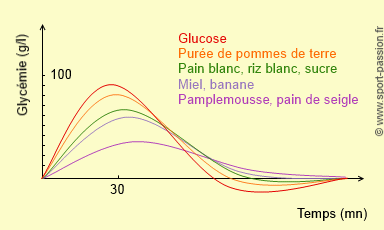
As one thing leads to another, we then tend, by a rather intuitive reaction, to want to counteract this blow by consumption of sugar, which then leads to hyperglycemia, followed by further hypoglycemia. And these endless cycles lead to overweight, and above all to unpredictable energy levels and moods.
Understanding this mechanism is extremely important, because it's one of the ills of the 20th and 21st centuriesSince modern diets have promoted carbohydrate-rich foods, often with a high glycemic index, for reasons of yield, preservation and taste.
What is the glycemic index?
Glycemic index (GI)sometimes spelled glycemic index, measures the food's ability to raise or lower blood sugar levels. Put another way, the higher the glycemic index, the more carbohydrates are released into the bloodstream, the higher the blood sugar level, the more insulin is secreted by the pancreas, and the more excess carbohydrates are stored in the liver, muscles and fat.
This index, defined by Prof. Jennie Brand-Miller, is given in relation to a reference food, which according to the studies is white bread, or pure glucose, with a GI of 100. Calculation of the GI is based on changes in blood glucose levels following consumption of 50g of carbohydrates present in the food.
In general, foods are classified by GI category into three main groups:
- High GI foods (over 60 or 70)such as white rice, white bread, bananas, sweets, etc...
- Medium GI foods (between 40 and 65 approx.) These include basmati rice, traditional baguettes, most fruits and some popular soft drinks.
- Low-GI foods (less than 50 or 40 according to current tables) with a low insulin secretion rate. oilseedsthe vegetablesthe pulsesrye bread, etc...
But beware: a food containing more carbohydrates than another does not necessarily have a higher GI than the latter. A baked potato, for example, will have a higher GI than some sugary industrial sodas, even though a potato contains around 24g of carbohydrates (from starch), whereas a soda can contain over 30g of carbohydrates (in the form of sugar).
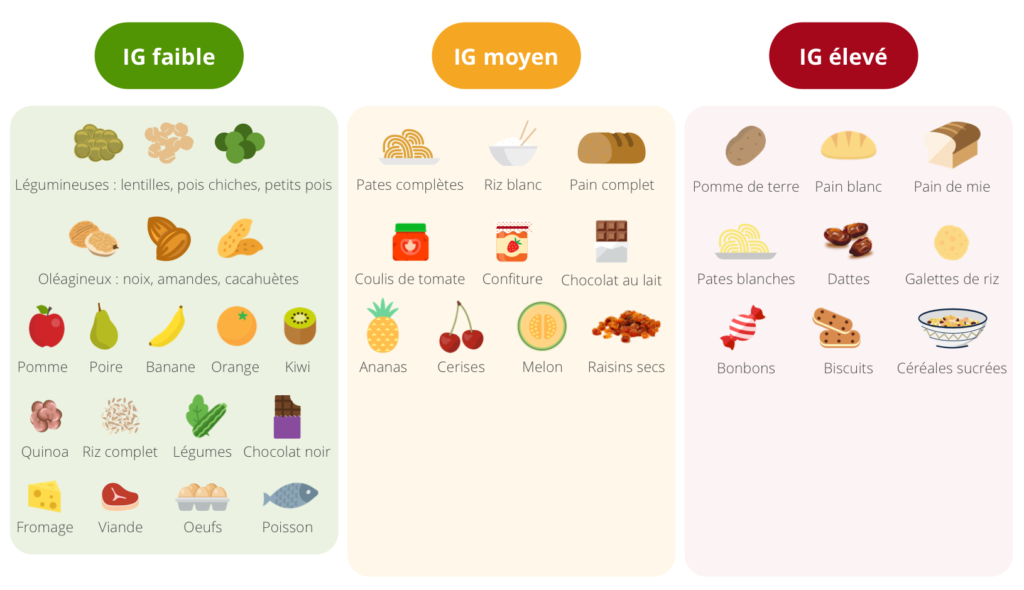
In fact, the glycemic index depends on many parameters, in addition to carbohydrate content:
- The degree of transformation These processes often remove the sugar's natural envelopes, as well as its nutrients and minerals. fibers that contain it.
- Cooking The longer the cooking time (as in the case of pasta), the higher the GI. Similarly, some medical nutritionists recommend leaving cooked rice in the fridge overnight before eating it, as the starch recovers its complexity when the food is left to rest for several hours, allowing slower digestion. It's a process used by some of Japan's top chefs.
- Presence of fiber or combination with other foods (rich in protein, for example) helps lower the GI of carbohydrate foods.
A famous table classifies foods according to their glycemic index. Basically, what you need to remember is that if you want to adopt a low-GI diet, as a source of carbohydrates, foods such as legumes (beans, chickpeas, broad beans, lentils), fruits and vegetables should be preferred. cereals vegetables, brown or basmati rice, rye bread, minimally processed products, fruit in moderation, and gentle cooking methods..
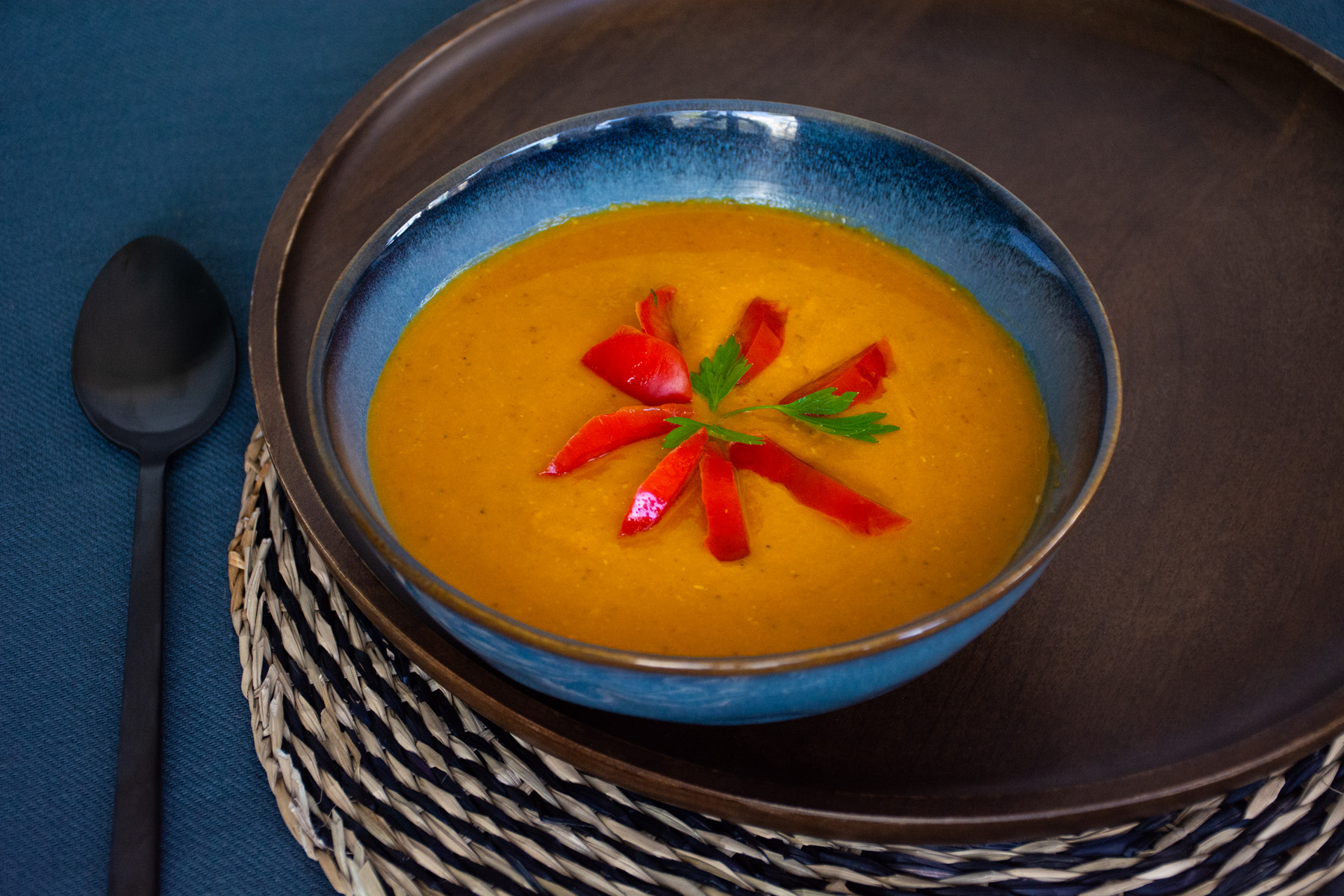
These foods concern carbohydrate intake (and only carbohydrate intake)which should be a variable source of energy depending on your lifestyle. They are therefore the "complementary" part of your diet.These are extremely important in the context of a healthy diet as recommended in this guide.

Secondly, as we said earlier, it's not because one food contains more carbohydrates than another, that it necessarily has a higher GI. On the other hand, some foods have a lower GI than others, while they are recognized as being more unhealthy. The glycemic index is therefore not free of paradoxes, and some people prefer to use the "glycemic index". glycemic load.
Glycemic load, definition
Visit glycemic load is an index that weights the glycemic index with the amount of carbohydrates contained in a food. The glycemic index measures the variation in blood sugar levels, based on 50g of carbohydrates contained in a food. And yet, some high-GI foods require you to eat a considerable amount to reach the 50g mark, while other low-GI foods easily exceed this amount.
To remedy this problem, Prof. Walter Willett introduced the notion of glycemic loadwhich is obtained by multiplying the GI of a food by the amount of carbohydrates in a portion of that food, then dividing by 100.
If the result is less than or equal to 10, the glycemic load is said to be low or zero. If it is between 11 and 19, it is said to be moderate. Above or equal to 20, the glycemic load is high.
Let's take an example. Watermelon has a very high GI of 72, while white rice has a lower GI of 64. However, you need a large quantity of watermelon (150g) to achieve the same glycemic load as white rice, because white rice contains more carbohydrates than watermelon (28g per 100g, compared with 8g per 100g). As a result, the glycemic load of a watermelon is only 4, while that of a 150g portion of white rice is 25! As a result, a portion of watermelon may have less impact on blood sugar levels than a portion of rice.

In short, for simplicity's sake, it is very interesting to use the glycemic loadrather than on the glycemic index alone, because the glycemic load takes into account the quantity of food ingested, and above all the carbohydrate content of the foodwhich gives this index a more concrete character.
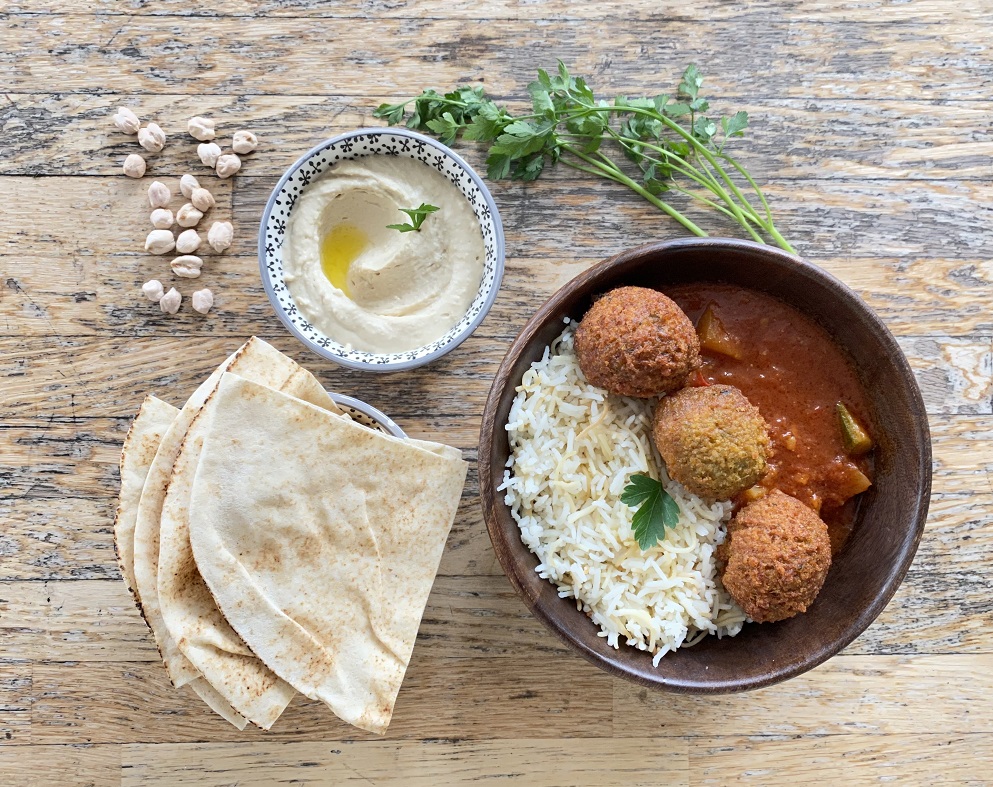
Speaking of concrete things, based on glycemic load, the carbohydrate-rich foods to be prioritized are mainly fruit, legumes, oilseeds, vegetables, and whole grains. Rice, even basmati, has a relatively high glycemic load, even if still acceptable, and it's a good idea to reserve it for use before or after heavy exertion, or on a day when energy levels are high.
Insulin index
The insulin index is another indicator that measures a rise in insulin levels following the ingestion of food. This rate compares the insulin level secreted after eating the food with the insulin level secreted after eating the same amount of white bread.
The purpose of this indicator is to highlight increased insulin secretion when consuming lactose-rich productswhose rise in blood sugar is not as marked, reinforcing the idea that in any case, consumption of lactose-containing products should be reduced as much as possible..
Conclusion
As you can see, the trick lies in control your carbohydrate intakeIt's not just a question of quantity, but also of quality, via the way it's produced, cooked and combined with other nutrients.
To reduce the risk of overweight, metabolic diseases (diabetes in particular), recurrent fatigue caused by cyclical hypoglycemia, stress, and many other ailments, it is advisable to give preference to foods with a low to moderate glycemic index and glycemic load.
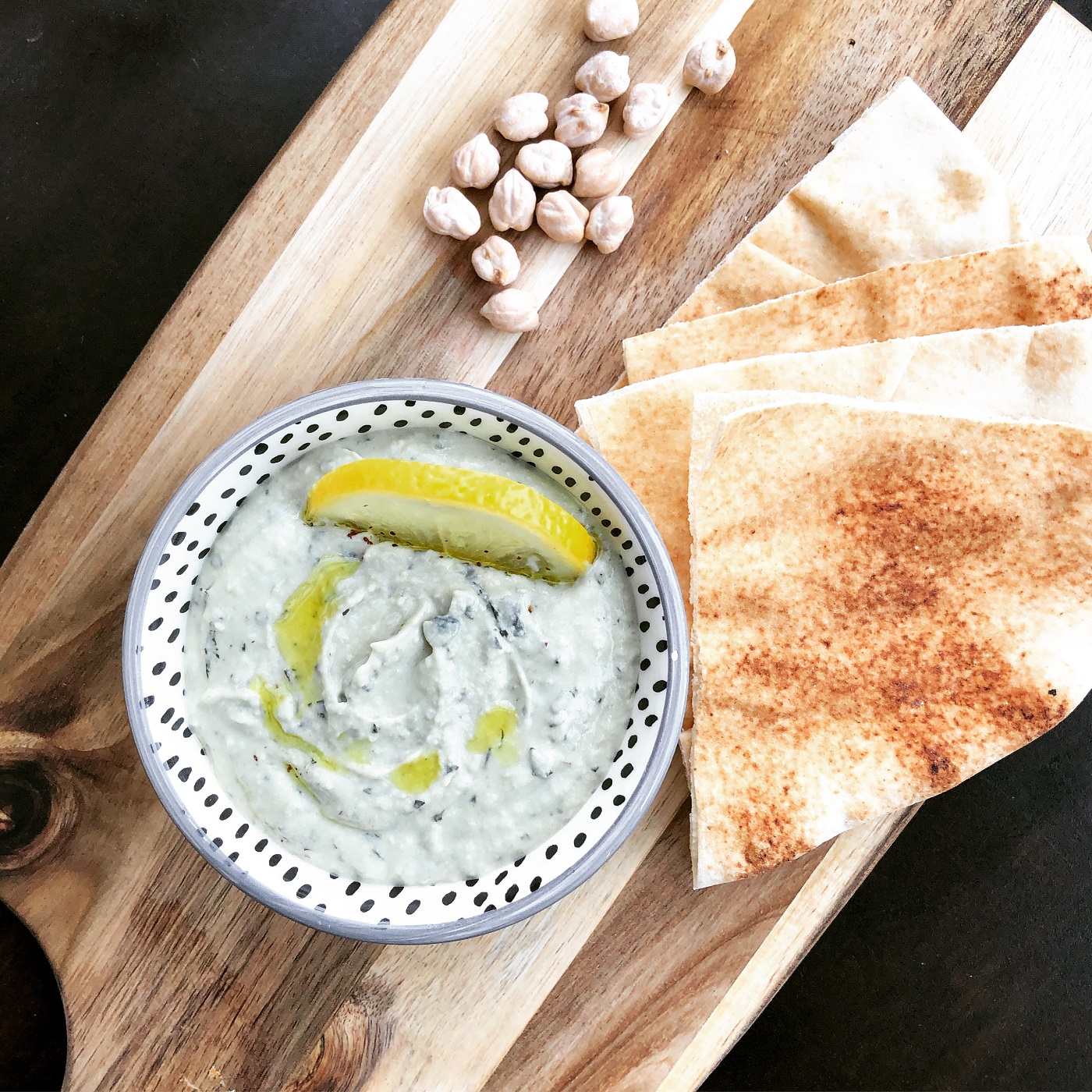
Starting with legumes (beans, chickpeas, broad beans, lentils), which are the stars of the Mediterranean diet), wholegrain or semi-complete cereals, basmati rice in reasonable doses, oilseeds and fruit in reduced doses..
Here's a list of the best low-GI breads for your health.
It is also advisable to give priority to a substantial intake of proteins and good fats. And ideally limit foods with a high glycemic index and loadsuch as industrial products, foods rich in fast sugars, refined cereal products, soft drinks, sweets, pastries, white rice, white pasta, white bread, etc...
And just as well, in a forthcoming chapter on dieting Mediterranean (which is the next theme of Blooness guide), we draw up the ultimate list of the best foods for carbohydrate intake. In a third step, we'll also look at.., how to manage your daily carbohydrate intake, and when to give priority to carbohydrates (article also to come). So stay tuned!
Next chapter: Optimal protein, carbohydrate and fat intakes for the best possible health and a slim figure - [MEMBER ZONE]
Previous chapter: Ketogenic diet and cancer: Dr Schwartz's protocol

One Response
Bjr,
Do you have a summary table of foods with low Glycemic Index, Glycemic Load and insulin i nd ex!
I can't find one with INSULINIC Indexes?
Thank you
Danye